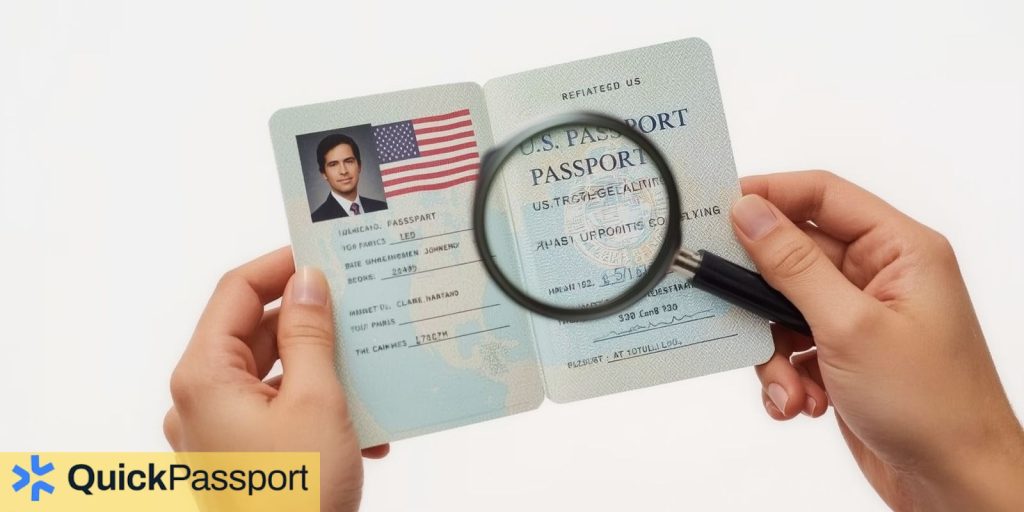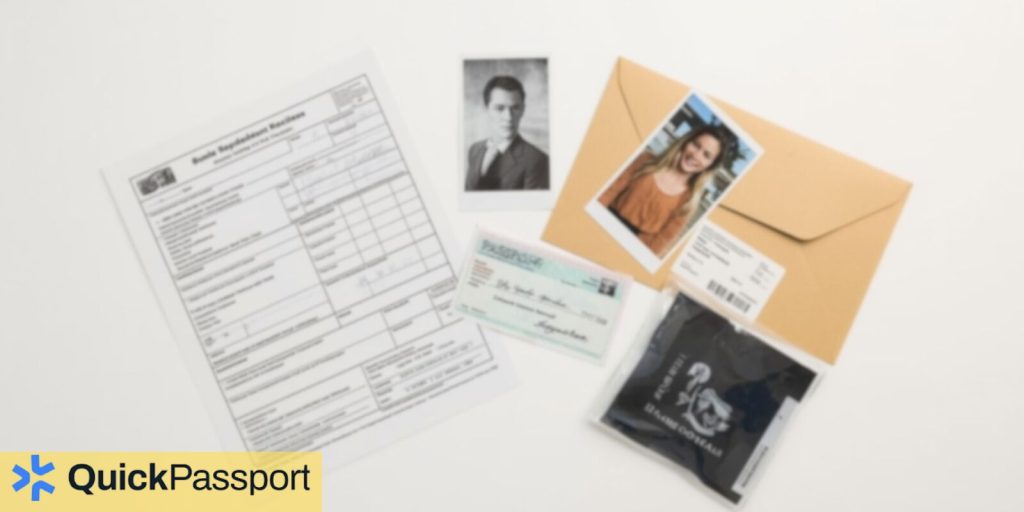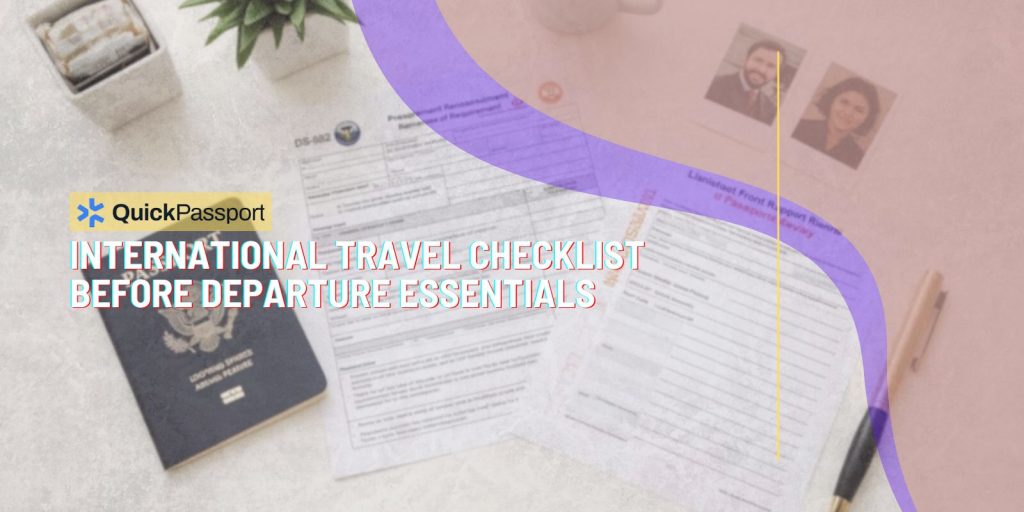Renewing your passport doesn’t always require a trip to the passport office or post office. The U.S. Department of State offers a convenient mail-in renewal option for eligible applicants, but understanding the specific passport renewal by mail eligibility requirements is crucial before you begin the process. This streamlined approach can save you significant time and effort, allowing you to renew your passport from the comfort of your home while avoiding long lines and scheduling appointments.
The passport renewal by mail process is designed for adult passport holders whose current or most recent passport meets specific criteria established by the State Department. These requirements exist to ensure security protocols are maintained while providing convenience to eligible travelers. However, not everyone qualifies for this expedited method, and attempting to use mail renewal when you’re ineligible can result in delays, returned applications, and additional fees.
Understanding these eligibility requirements before starting your renewal application is essential for a smooth process. The criteria cover various aspects of your current passport, including its condition, age, and how it was originally obtained. Additionally, certain life changes such as name changes, gender marker updates, or significant damage to your current passport may disqualify you from using the mail renewal option.
For residents in the Arlington area, QuickPassport – Arlington provides expert guidance on navigating these requirements and can help determine whether you qualify for mail renewal or need to pursue alternative renewal methods. Their experienced staff understands the nuances of passport regulations and can ensure you choose the most appropriate renewal path for your specific situation.
This comprehensive guide will walk you through each eligibility requirement, explain the complete mail renewal process, and provide practical tips to ensure your application is processed efficiently. Whether you’re a frequent traveler needing a quick renewal or someone planning their first international trip in years, understanding these requirements will help you make informed decisions about your passport renewal strategy.
Key Takeaways
- Age and Timing Requirements: You must be at least 16 years old and your most recent passport must have been issued when you were 16 or older. The passport must have been issued within the last 15 years to qualify for mail renewal.
- Passport Condition Standards: Your current passport must be undamaged and in your physical possession. Significantly damaged, mutilated, or lost passports cannot be renewed by mail and require in-person applications.
- Name Consistency Rules: The name on your renewal application must match the name on your most recent passport, or you must be able to document the name change with acceptable legal documents such as marriage certificates or court orders.
- Original Issuance Method: Your most recent passport must have been issued normally, not as a replacement for a lost, stolen, or damaged passport. Emergency or temporary passports also disqualify you from mail renewal.
- Required Documentation: You’ll need Form DS-82, your most recent passport, one passport photo, the appropriate fee, and any supporting documents for name changes if applicable.
- Processing Timeline Considerations: Standard mail renewal takes 6-8 weeks, while expedited service takes 2-3 weeks. Plan accordingly based on your travel dates and allow additional time for mailing.
- Fee Structure Understanding: Mail renewal fees include the passport book fee ($130) and optional expedited service fee ($60), plus applicable shipping costs for faster delivery of your new passport.
- Alternative Options: If you don’t meet mail renewal eligibility requirements, you’ll need to apply in person at a passport acceptance facility or passport agency, which requires additional documentation and scheduling.
Understanding Passport Renewal by Mail Eligibility
The passport renewal by mail eligibility requirements serve as gatekeepers to ensure that only qualified applicants can use this convenient service. These requirements are strictly enforced by the U.S. Department of State and are designed to maintain the security and integrity of the passport system while providing efficiency for routine renewals.

The most fundamental requirement is that you must currently hold a U.S. passport that was issued when you were 16 years of age or older. This requirement exists because passports issued to minors under 16 have different security protocols and shorter validity periods. If your most recent passport was issued when you were under 16, you’ll need to apply in person as if applying for a first-time passport, regardless of your current age.
The 15-year rule is another critical eligibility factor. Your most recent passport must have been issued within the last 15 years from the date you’re submitting your renewal application. This timeframe ensures that the security features and biographical information in the State Department’s records remain current and reliable. Passports older than 15 years require in-person renewal to verify your identity and update security protocols.
Physical possession of your most recent passport is mandatory for mail renewal. You cannot renew by mail if your passport has been lost, stolen, or is significantly damaged. The State Department defines significant damage as water damage, unauthorized markings, torn or missing pages, or any condition that makes the passport unreadable or unusable. Minor wear and tear from normal use typically doesn’t disqualify you, but borderline cases may require professional assessment.
Name Change Documentation and Requirements
Name changes present one of the most complex aspects of passport renewal by mail eligibility requirements. The general rule is straightforward: the name on your renewal application must exactly match the name on your most recent passport. However, life events such as marriage, divorce, adoption, or legal name changes can complicate this requirement and may affect your eligibility for mail renewal.
If your name has changed since your last passport was issued, you can still potentially qualify for mail renewal, but you must provide acceptable documentation of the name change. The State Department accepts specific types of documents as proof of legal name change, including certified marriage certificates, divorce decrees that restore a previous name, court orders for legal name changes, and adoption decrees. These documents must be original or certified copies issued by the appropriate government authority.
The timing and extent of name changes also matter. If you’ve had multiple name changes since your last passport was issued, you may need to provide documentation for each change, creating a clear paper trail from your passport name to your current legal name. In some cases, multiple name changes or complex documentation requirements may make in-person renewal more appropriate than mail renewal.
Religious or cultural name changes that aren’t legally documented typically don’t qualify for mail renewal unless you can provide acceptable legal documentation. Similarly, minor spelling corrections or variations in how your name appears may require additional documentation or in-person processing, depending on the specific circumstances and the discretion of passport processing officials.
For married individuals, timing can be crucial. If you were married recently and want your new passport to reflect your married name, ensure you have a certified copy of your marriage certificate before submitting your mail renewal application. Some applicants choose to renew their passport in their maiden name immediately after marriage and then apply for a name change renewal later, but this approach involves additional fees and processing time.
Required Forms and Documentation Process
Successfully completing the passport renewal by mail process requires careful attention to documentation requirements and form completion. The cornerstone document is Form DS-82, the official Application for Passport Renewal by Mail. This form must be completed accurately and completely, as errors or omissions can result in processing delays or rejection of your application.
Form DS-82 requires detailed personal information including your full name, date and place of birth, Social Security number, and contact information. You’ll also need to provide details about your most recent passport, including the passport number, issue date, and your name as it appears on that passport. Travel plans section should be completed if you have immediate travel needs, as this information helps prioritize processing when necessary.
The passport photo requirement is strictly enforced and must meet specific State Department standards. Your photo must be taken within the last six months, measure 2×2 inches, show a clear front-facing view of your face, and meet color, background, and composition requirements. Many applications are delayed or rejected due to non-compliant photos, so it’s worth investing in professional passport photos from a reputable source.
Your most recent passport must be submitted with your renewal application and will be cancelled and returned to you with your new passport. This requirement means you’ll be without a passport during the processing period, which typically takes 6-8 weeks for standard service. If you need to travel during this period, you should consider expedited service or alternative renewal methods.
Payment must be included in the form of a check or money order made payable to the U.S. Department of State. Personal checks are acceptable, but cash is not accepted for mail-in applications. The standard renewal fee is $130 for a passport book, with an additional $60 fee for expedited service if needed. Some applicants also choose to pay for expedited return shipping to receive their new passport more quickly.
Processing Timeline and Expedited Options
Understanding the processing timeline for passport renewal by mail is crucial for planning your travel and ensuring you receive your new passport when needed. The State Department’s standard processing time for mail renewals is currently 6-8 weeks from the date they receive your complete application. This timeline can fluctuate based on seasonal demand, with longer processing times typically occurring during peak travel seasons in spring and summer.

Expedited processing is available for an additional $60 fee and reduces the processing time to 2-3 weeks from receipt of your application. However, this expedited timeline doesn’t include mailing time to and from the processing facility, so you should factor in additional time for postal delivery. For applications requiring expedited service, using overnight or priority mail for both sending your application and requesting expedited return delivery can help minimize total processing time.
The processing timeline begins when the State Department receives your complete application, not when you mail it. Applications missing required documents, fees, or containing errors will be returned to you, effectively restarting the timeline once you correct and resubmit your application. This is why careful review of all requirements before mailing is essential for meeting travel deadlines.
For urgent travel needs within 2-3 weeks, mail renewal may not be the best option even with expedited service. In these cases, in-person renewal at a passport agency or authorized facility might be more appropriate, despite not meeting the typical mail renewal convenience factor. Passport agencies can sometimes provide same-day or next-day service for documented travel emergencies, though appointments are required and availability is limited.
Tracking your application status is possible through the State Department’s online tracking system, which provides updates on when your application was received, when processing began, and when your new passport was mailed. This system helps you monitor progress and plan accordingly, especially if you have upcoming travel that depends on receiving your renewed passport.
Common Disqualifying Factors and Alternative Solutions
Several common situations can disqualify applicants from using the passport renewal by mail process, requiring them to pursue alternative renewal methods. Understanding these disqualifying factors helps you choose the appropriate renewal path from the beginning and avoid delays associated with incorrect application methods.
Lost, stolen, or significantly damaged passports are the most common disqualifying factors. If your passport has been lost or stolen, you must apply in person using Form DS-11 and provide additional identity documentation. This process includes reporting the lost or stolen passport to prevent fraudulent use and requires more extensive identity verification than mail renewal.
Passports issued as replacements for lost, stolen, or damaged documents also disqualify you from mail renewal. This includes emergency passports issued abroad, limited-validity passports, and temporary travel documents. These special issuance circumstances require in-person processing to ensure proper documentation and security protocols are followed for your next renewal.
Significant changes to your appearance since your last passport photo may also necessitate in-person renewal, even if you otherwise meet mail renewal eligibility requirements. While the State Department doesn’t provide specific guidelines for what constitutes significant appearance changes, factors such as major weight loss or gain, facial surgery, or gender transition may require in-person processing for identity verification.
International adoption situations, dual citizenship complications, or questions about U.S. citizenship status can also disqualify applicants from mail renewal. These complex cases typically require additional documentation and in-person review by passport specialists who can evaluate unique circumstances and ensure proper processing.
For Arlington-area residents who don’t qualify for mail renewal, QuickPassport – Arlington provides comprehensive assistance with in-person renewal processes. Their experienced team can help you understand alternative options, prepare required documentation, and navigate the more complex requirements associated with in-person passport applications, ensuring you still receive efficient service despite not qualifying for mail renewal.
Frequently Asked Questions
Can I renew my passport by mail if it expires soon but hasn’t expired yet?
Yes, you can renew your passport by mail even if it hasn’t expired yet, as long as you meet all other eligibility requirements. There’s no requirement to wait until your passport expires, and renewing early can help avoid travel disruptions.
What happens if I don’t meet the mail renewal eligibility requirements?
If you don’t qualify for mail renewal, you’ll need to apply in person using Form DS-11 at a passport acceptance facility or passport agency. This process requires additional documentation and typically takes longer than mail renewal.
Can I travel while my passport renewal application is being processed?
No, you cannot travel internationally while your renewal application is being processed because you must submit your current passport with your application. Plan accordingly and avoid submitting your renewal if you have immediate travel needs.
What if my name has changed multiple times since my last passport was issued?
You may still qualify for mail renewal if you can provide documentation for each name change, creating a clear legal trail from your passport name to your current name. Complex name change situations may require in-person processing.
How do I know if my passport damage disqualifies me from mail renewal?
Minor wear and tear from normal use typically doesn’t disqualify you, but water damage, torn pages, unauthorized markings, or damage that makes the passport unreadable requires in-person renewal. When in doubt, consult with passport professionals.
Can I use mail renewal if my previous passport was issued when I was a minor?
No, if your most recent passport was issued when you were under 16 years old, you must apply in person regardless of your current age. This applies even if you’re now an adult.
What’s the difference between standard and expedited processing for mail renewal?
Standard processing takes 6-8 weeks and costs $130, while expedited processing takes 2-3 weeks and costs an additional $60. Both timelines begin when the State Department receives your complete application.
Can I check the status of my mail renewal application?
Yes, you can track your application status online through the State Department’s tracking system using your last name, date of birth, and either your Social Security number or the last four digits of your Social Security number.
Conclusion
Understanding passport renewal by mail eligibility requirements is essential for anyone seeking to renew their U.S. passport efficiently and conveniently. These requirements, while specific and sometimes complex, are designed to balance security needs with customer convenience, allowing qualified applicants to avoid the time and effort associated with in-person applications.
The key to successful mail renewal lies in careful self-assessment against all eligibility criteria before beginning the application process. From age and timing requirements to passport condition and name consistency rules, each factor plays a crucial role in determining whether you qualify for this streamlined renewal option. Taking the time to verify your eligibility upfront can save significant time and frustration later in the process.
For those who do qualify, the passport renewal by mail process offers a convenient way to maintain valid travel documentation without disrupting busy schedules or dealing with appointment availability issues. However, proper planning remains essential, particularly regarding processing timelines and travel needs. Understanding that you’ll be without a passport during processing helps ensure you don’t inadvertently create travel complications.
Arlington residents seeking guidance on passport renewal options can benefit from the expertise available at QuickPassport – Arlington, where experienced professionals can help assess eligibility, review documentation requirements, and ensure applications are completed correctly the first time. Whether you qualify for mail renewal or need to pursue alternative options, professional guidance can streamline the process and minimize potential delays.
Remember that passport renewal requirements and procedures can change, so always verify current requirements with official State Department sources or qualified professionals before submitting your application. With proper preparation and understanding of the eligibility requirements, passport renewal by mail can be an efficient solution for maintaining your travel documentation and ensuring you’re ready for your next international adventure.






